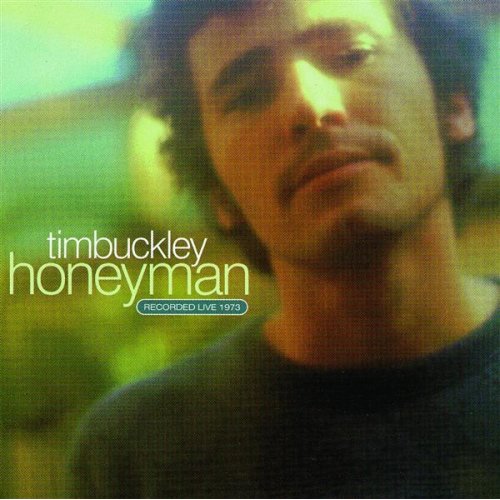1996
Tim
Buckley: Honeyman
By
Richard Lehnert
TIM
BUCKLEY Honey Man
Manifesto PT3 40704-2 (CD only).
Bill Inglot, compilation, post-production, mastering; Dan
Hersch, mastering.
ADD? TT: 58:51
This
late live radio broadcast, recorded in New York (WLIR,
11/27/73) before a tiny studio audience less than two years
before he died, turns out to be one of the best-played, most
satisfyingly balanced albums of the latter half of Tim Buckley’s
recorded career. This is the same quintet—Buckley, guitarist
Joe Falsia, keyboardist Mark Tiernan, bassist Bernie Mysior,
drummer Buddy Helm—that backed Buckley on his penultimate
studio album, Sefronia. But while they sounded like
no more than a suspiciously slick L.A. studio band on that
water-treading record, here, just a few months later, they
sound and play like a band. For once Buckley has backing that
can follow him anywhere his improvisational whim takes him,
and on Honey Man that whim is one of musical steel.
 |
There’s
no trace on this disc of the sensitive folk Troubadour Buckley
started out as; that had long since been replaced by avant-garde
jazz stylings, R&B shouts and honks, and exotic tribal ululations.
And though Buckley always sounded vocally confident to the point
of arrogance, even narcissism, here every whoop, swoop, holler,
bent note, and melisma has its place in an overall musical vision.
Songs like the downright horny revision of the traditional “Sally
Go Round the Roses” build inevitably, and the extended
scatting-over-percussion of “Devil Eyes” sounds
as if it’s happening because Buckley has something to say,
and not just three choruses and five minutes of air time to
fill.
One
reason Honey Man works so well as an album: it covers Buckley’s
entire career, from the folk psychedelia of “Pleasant
Street” (from Hello Goodbye, 1967) to a warm,
relaxed, solid “Buzzin’ Fly” (Happy
Sad, 1968) and beyond. Still, most of these tracks are
updated versions of hypersexed songs from Buckley’s late
funk period of Welcome to L.A. and Sefronia,
though minus those records’ overproduction and forced
attitude. And Buckley throws in a baritone version of Fred
Neil’s “Dolphins,” which he’d been
singing in concert since his teens.
Sound
is compressed, hard, and thin, but honest, and not at all
bad for this vintage of rock air-check; Randy Bookasta’s
liner notes are well-written and informative, and the photos
and booklet design strike a perfect balance between the dated,
the nostalgic, the contemporary, and the tasteful. A class
act, a must-buy for Buckley fans, and much better than last
year’s Live at the Troubadour 1969. Newcomers,
however, should start with Hello Goodbye, Blue Afternoon,
The Peel Sessions, and especially the haunting Dream
Letter: Live in London 1968.—Richard Lehnert
©
First Published in Stereophile, February 1996, Vol.19 No.2
COPYRIGHT
© 2013 by Source Interlink: Enthusiast Media Group
261
Madison Avenue, 6th Floor, New York, NY 10016
(212)
229-4896, (212) 886-2809 fax
www.stereophile.com
The
Estate wishes to thank Richard Lehnert for providing all the
content for this. review |